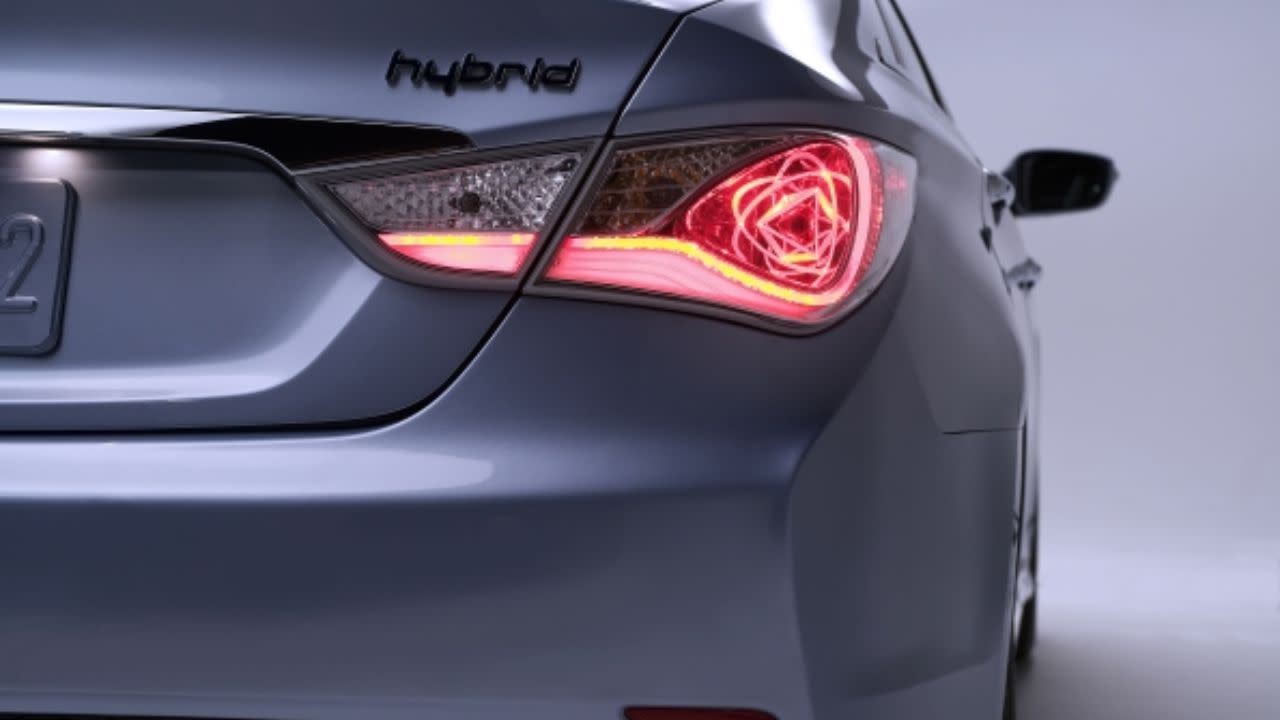The narrative around electric vehicles has hit a few speed bumps lately. Despite years of relentless marketing and massive production ramps, the EV takeover hasn’t quite materialized as some predicted. We’re now seeing industry giants like VW and Mercedes-Benz, who went all-in on batteries, subtly diverting portions of their EV budgets to inject life back into good old ICE platforms.
On the other hand, hybrids are experiencing a surge in popularity, with manufacturers competing to offer a dizzying array of options. It’s easy to see the appeal: they promise that sweet spot of substantial fuel savings without the existential dread of range anxiety. For many drivers, it seems like the ultimate compromise.
Before you sign on the dotted line for that virtuous hybrid, let’s yank back the curtain. Hybrids, for all their supposed eco-cred and practicality, come with their own collection of dirty little secrets.
Battery Production

Like their fully electric counterparts, many hybrids rely on lithium-ion batteries. Extracting the necessary metals, lithium, cobalt, nickel, manganese, and graphite, requires heavy-duty mining operations. Needless to say, these aren’t exactly quaint backyard digs. The environmental impact is monumental: think open-pit mining operations that resemble lunar landscapes, carving out vast sections of pristine wilderness.
Consider the thirst: producing a single ton of lithium can guzzle as much as 2.2 million liters of water. In arid regions, this puts immense strain on local water supplies, impacting surrounding communities and fragile ecosystems. Beyond the H2O, the chemicals used during extraction and processing are often toxic, posing a significant risk of contaminating soil and groundwater if not meticulously managed. So, that “green” hybrid in your driveway might have a rather large, dirty footprint you never see.
Batteries Are Expensive To Replace

Hybrid and EV batteries typically come with warranties spanning 8-10 years or 100,000 to 150,000 miles. While many last beyond that, there’s an undeniable truth: they will eventually degrade to a point where replacement is the only viable option.
And here’s where your wallet might go into shock. Even though hybrids pack smaller battery packs than pure EVs, they are far from cheap. Prices for a replacement can start around $5,000 for a compact sedan or hatchback and easily skyrocket past $16,000 for an SUV.
It’s not like you’ll be swapping these out in your garage with a ratchet set; this is a specialized job, meaning you’ll also be on the hook for significant labor costs and the often-overlooked expense of proper battery disposal. That “savings at the pump” might just be a future mortgage payment in disguise.
Battery Recycling

Sure, lithium-ion batteries can be recycled at the end of their life cycle. But “can be” and “is readily done” are two entirely different things. The process is anything but simple. It requires energy-intensive pyrometallurgy or complex hydrometallurgy, far from a casual drop-off at your local recycling center.
Currently, the infrastructure for large-scale, cost-effective lithium-ion battery recycling is still in its infancy. Few companies are willing to invest heavily in a process that’s both technically challenging and not yet highly profitable. This means it will be a while before someone cracks the code on how to recycle these power packs on a scale large enough to have a significant, positive environmental impact. If you’re having a shop replace your high-voltage hybrid battery, expect a hefty charge for disposal, because nobody wants to deal with that toxic waste.
Hybrids Have a Higher Purchase Price

The hybrid variant of a given car model invariably carries a higher sticker price than its gas-only counterpart. While they are generally more affordable than pure EVs, that upfront premium can put them out of reach for budget-conscious buyers.
Many owners justify this extra expenditure by banking on long-term fuel savings. The harsh reality? It can take several years, or even tens of thousands of miles, to actually break even on that initial investment through fuel savings alone. This is particularly true if you’re one of those who replace their car every few years; you might never recoup that premium before the next vehicle purchase.
Fossil Fuel Dependence

Opting for a hybrid to “reduce your carbon footprint” is a noble intention, but it assumes you’ll be running predominantly on battery power. The inconvenient truth is that most hybrids are still fundamentally internal combustion engines with electric assistance. They do burn gasoline, and they do emit CO2 into the atmosphere.
Factor in the energy-intensive battery manufacturing process and the vehicle’s entire lifecycle emissions (LCA), and you might find yourself with a vehicle that, by some metrics, has a higher initial carbon footprint than a conventional ICE car. Your “eco-friendly” commuter still chugs gas, just perhaps with a touch more virtue-signaling.
Power and Performance

Sure, some hypercars like the McLaren P1 or Ferrari LaFerrari utilize hybrid technology, but that’s for mind-blowing power delivery, not just economy. Your average, everyday hybrid is meticulously engineered to maximize fuel efficiency, typically pairing a modest gas engine with electric motors.
The added weight of the battery pack and electric motor, coupled with the relentless focus on efficiency, often means hybrids are slower to accelerate than their pure ICE counterparts. That extra mass also compromises handling and agility, making them feel less nimble when you try to toss them into a corner. Your hybrid’s “sport mode” is often just louder engine noise; don’t expect it to win any drag races, unless it’s against a kid on a scooter.
Potentially Higher Maintenance Costs

When everything is humming along nicely, or if your hybrid is still comfortably under warranty, maintenance costs may be comparable to those of an ICE vehicle. However, that’s often still more than the bare-bones servicing requirements of a pure EV.
The real financial hit comes when that warranty expires. Hybrids feature dual powertrains, meaning they combine the complexity of a conventional internal combustion engine (ICE) with high-voltage electric motors, inverters, battery management systems, and specialized cooling systems. If a high-voltage component fails out of warranty, repairs can be astronomically expensive.
Finding an affordable, independent mechanic who possesses the specialized diagnostic tools and training for hybrid systems can also be a significant challenge, often forcing you to return to the pricier dealership service bay. Another hit to your savings that may put that dream car purchase back yet again — good thing you have your hybrid, I guess.
Poor Highway Fuel Economy

Hybrids are undisputed kings in city driving. Their electric motors excel in stop-and-go traffic, enabling electric-only propulsion at low speeds and recovering energy through regenerative braking. This translates to significantly lower fuel consumption than a gas-only car in urban environments.
However, once you hit the open highway, that advantage rapidly diminishes. A hybrid’s fuel consumption often rises drastically — the opposite of what you see in an ICE vehicle. At cruising speeds, the gas engine is predominantly engaged. Because it’s usually a smaller, less powerful unit lugging around extra battery weight, it has to work harder than an equivalent, lighter ICE car. Your hybrid’s city MPG bragging rights tend to disappear faster than a cheap date on the interstate.
Hybrids Aren’t for Everyone

We’re constantly fed the narrative that hybrids are inherently more environmentally friendly, but as we’ve dissected, that’s not necessarily true, especially if your driving mostly consists of highway miles. Additionally, if your weekly commute is a short trip to the grocery store and back, paying a significant premium for a hybrid might never yield any financial benefits.
For a hybrid to truly deliver both environmental and economic advantages, you need to cover a substantial amount of miles, predominantly in city driving or stop-and-go traffic, where the electric assist can do its best work. Otherwise, you’re just driving a heavier, more complex gas car.
Most are Not Meant For Towing and Hauling

When it comes to pulling heavy loads, traditional gasoline and diesel engines are still the undisputed champions. Even some new EVs, such as the Ford F-150 Lightning, Rivian R1T, and Tesla Cybertruck, are proving their mettle in this arena.
However, for most mainstream hybrids, towing is an afterthought, if it’s even allowed. The smaller internal combustion engines are not designed for sustained heavy loads, and the hybrid systems often lack the necessary cooling capacity or robust driveline components. You’re clearly not going to be towing more than a Barbie convertible with something like the Prius.
The Toyota Sequoia often tops lists of hybrid vehicles for its impressive towing capacity, which is 9,520 pounds. Second place goes to the Lexus LX Hybrid at 8,000 pounds. It’s good enough for some campers, but most hybrids are coming nowhere near these numbers. Meanwhile, plenty of gas-fueled SUVs and pickups can breezily tow 10,000-plus pounds, giving you a lot more variety of choices to choose from if towing is your priority. But if the Toyota Sequoia is your dream car, you’re in luck.
Higher Insurance Premiums

That shiny new hybrid typically comes with a steeper insurance bill than its traditional ICE counterpart. This makes perfect sense when you consider the higher purchase price and the increased technological complexity. Insurance companies aren’t charities, after all.
Because hybrid vehicles involve more expensive, specialized components (especially the battery and high-voltage wiring) and require specialized labor for repairs, insurance claims and associated repair costs tend to be higher. Expect to shell out anywhere between 6% and 12% more to insure a hybrid compared to the equivalent gas-only model. That “eco-friendly” car also has an “expensive-to-fix” price tag for the insurance company.
Temperature-Sensitive Batteries

The sophisticated lithium-ion batteries found in hybrids (and EVs) are quite particular about their operating environment. They absolutely despise extreme temperatures. When it’s scorching hot, it accelerates battery degradation, leading to a permanent loss of capacity over time. Conversely, when the mercury plummets, the battery’s chemical reactions slow down, leading to a noticeable reduction in range, power output, and less efficient regenerative braking. What are they, Goldilocks? Apparently, the temperature has to be juuuust right.
Cold temperatures can also significantly impact charging times for plug-in hybrids, forcing the gas engine in standard hybrids to run more frequently and for longer periods to reach optimal operating temperature, thereby directly negating the fuel-saving benefits. Your “advanced” battery is pickier about the weather than your aunt Mildred.
Flash in the Pan?

Toyota famously revolutionized the automotive world with the original Prius hybrid, and the technology has evolved dramatically since then. However, the regulatory landscape is shifting. The EU and several U.S. states have laid out aggressive timelines to ban the sale of new ICE vehicles in the near future, a ban that typically includes hybrids due to their reliance on an internal combustion engine.
Meanwhile, pure EVs are advancing at a breakneck pace, and other alternative technologies like e-fuels (synthetic gasoline) and hydrogen fuel cells are gaining traction. It’s entirely plausible that hybrids, despite their current popularity, are merely an interim technology — a bridge to a truly fossil-fuel-free future, destined to be phased out as more efficient and advanced solutions mature. Are hybrids the Betamax of the automotive future or a viable long-term solution despite all their flaws? Only time will tell. In that time, we will be crossing our fingers for your wallet.
Like our content? Follow us. Read More:
Yahoo News – Latest News & Headlines
Read the full article .


